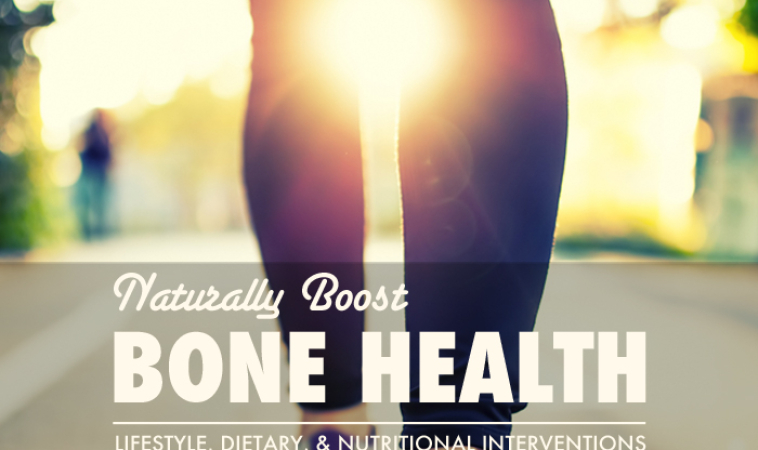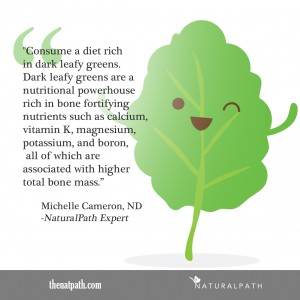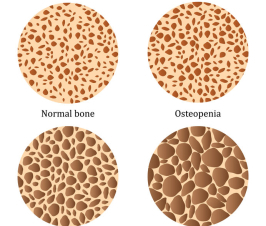Osteoporosis refers to a skeletal condition characterized by decreased bone mass. This contributes to fragile and porous bones leading to an increased risk of fracture. Osteoporosis is most common in postmenopausal women due to accelerated bone loss occurring as a result of declining estrogen levels. In the United States alone, an estimated 10 million adults have osteoporosis. Approximately 50% of women and 20% of men over the age of 65 will suffer osteoporosis related fractures in their lifetime. Osteoporotic fractures are a major public health concern due to the increased risk of mortality within the first year following a fracture, the increased placement of survivors in long-term care facilities following fracture, and increased health care costs and burden.
While pharmaceutical interventions are widely available and found to be effective in the prevention and treatment of osteoporosis, there is a growing demand for natural interventions to prevent osteoporosis and promote healthy bones. Osteoporosis prevention is optimized when foundational dietary and lifestyle interventions are begun in the first three decades of life, when bone building is at its peak.
Lifestyle Interventions
Get your steps. Weight bearing exercise such as walking, running, or weight lifting is crucial in the prevention of bone loss because it encourages the natural process of bone breakdown and rebuilding. Research shows that exercise early in life boosts bone mass while exercise later in life maintains it. Exercise also improves strength, coordination, and balance which may reduce the risk of falls and fracture. Engaging in weight bearing exercise for 30 minutes five times weekly is a great way to build and maintain strong healthy bones.
Quit smoking. Cigarette smoking was first recognized as a risk factor for osteoporosis decades ago and has been proven to decrease bone density. Most studies suggest that smoking not only increases the risk of fracture but also extends healing times and leads to more complications if a fracture occurs. Women that smoke often produce less estrogen (leading to accelerate bone loss) and have been found to have almost twice the risk of hip fracture compared to female non-smokers.
Watch the booze. Alcohol may also have a negative impact on bone health via several pathways including reduced gastrointestinal absorption of calcium, disruption of hormones involved in calcium balance, and negative effects on the liver, which is important for activating vitamin D. Heavy alcohol consumption is specifically linked to the most serious type of fracture (the hip) and actually kills osteoblasts, the bone-making cells of the body. Furthermore, alcohol affects balance and gait, increasing the risk of falls. Regular consumption of more than two alcoholic drinks per day increases the risk of osteoporosis.
Dietary and Nutritional Interventions
Consume a diet rich in dark leafy greens.Dark leafy greens are a nutritional powerhouse rich in bone fortifying nutrients such as calcium, vitamin K, magnesium, potassium, and boron, all of which are associated with higher total bone mass.Monitor dietary salt.High sodium intake can increase urinary excretion of calcium. The recommended daily intake of sodium should not exceed 2300 mg daily, equivalent to about 1 teaspoon of table salt.
Avoid excess caffeine and colas.The research continues to be murky here; however, caffeine has been show to promote bone loss. Colas, but not other types of sodas, have been associated with low bone density due to high phosphoric acid content, as well as caffeine. I generally recommend no more than three cups of coffee daily if osteoporosis prevention is a goal. Cola intake is a no brainer – just don’t consume it.
Ensure adequate dietary calcium. Aim for at least three servings of high-quality organic dairy products or calcium fortified foods daily (1 serving size = 1 cup of milk or yogurt, 1.5 oz cheese). A serving size represents approximately 300 mg of dietary calcium, important to keep in mind if you are also supplementing with calcium. Consumption of dark leafy greens, sardines, tofu, and soy milk also represent healthy options for increasing dietary calcium intake.
Postmenopausal females should aim to consume 1200 mg of calcium daily. The optimal intake of calcium in premenopausal women or in men with osteoporosis is not well established, however, 1000 mg of calcium daily is generally recommended. Dividing doses into 500 – 600 mg increments throughout the day allows for better calcium absorption. Some types of calcium, such as calcium citrate, may also be better absorbed than others.
Monitor your vitamin D. Vitamin D plays an important role in the absorption of calcium and maintaining strong healthy bones. Our skin makes vitamin D from ultra-violet rays in sunlight. Many people, however, either do not get enough sun exposure or they do not get enough vitamin D from food. Low vitamin D levels are associated with an increased risk for osteoporosis and fractures.
Vitamin D is naturally abundant in fatty fish like salmon and tuna or can be found in fortified foods such as milk, orange juice, and cereals. If supplementation is necessary, I recommend a daily vitamin D intake of 2,000 IU to support healthy bones. A physician or health care professional should always monitor Vitamin D levels.
Mega magnesium. The standard American diet is notoriously deficient in magnesium largely in part to soil nutrient depletion and low consumption of magnesium rich foods. Low blood levels of magnesium have been correlated with low bone density primarily through magnesium’s impact on parathyroid hormone and vitamin D production, both of which impact calcium levels. Because our bodies are not good at storing magnesium, it is imperative to get enough in the diet or through supplementation. Magnesium is found in nuts, seeds, whole grains, seafood, legumes, tofu, and many vegetables such as swiss chard and spinach. Aiming for approximately 500 mg of magnesium daily (including dietary sources) is a good starting point for osteoporosis prevention.
Consider Vitamin K.Vitamin K is produced in the gastrointestinal tract and promotes the absorption of calcium into bone; it is also found in high amounts in dark leafy greens. Vitamin K may be a special consideration for women during menopause as vitamin K begins to lose its ability to readily bind calcium. Even women with normal levels of vitamin K may not have enough to maintain bone health and should ensure adequate dietary or supplemental intake. Caution should be taken if taking blood-thinning medications such as warfarin/coumadin or aspirin, due to potential for drug interactions with vitamin K consumption. Vitamin K may be supplemented in the range of 150 to 500 mcg daily.
Other Considerations
Hormone replacement therapy. Estrogen plays an important role in the maintenance of bone. Declining estrogen levels in menopause rapidly escalates bone loss for about 5 years during and after menopause; total bone mass may be depleted up to three to four percent. Hormone replacement (HRT) is currently regarded as an acceptable treatment for osteoporosis after other conventional treatment options have been discussed and when all risks and benefits of HRT have been carefully considered.
HRT may be an appropriate option either for women who cannot tolerate conventional pharmaceuticals to treat osteoporosis or for those women who do not wish to take drugs. HRT would also be an important consideration in my mind for a women undergoing premature or early menopause, as she will experience lower estrogen levels at an earlier stage than most women, increasing her lifetime risk of osteoporosis even more. In my practice, I recommend and prescribe bio-identical hormones, which are plant derived hormones that exactly mimic a women’s natural sex hormones.
While osteoporosis remains a major health consideration, especially for women, prevention is key. Adopting healthy dietary and lifestyle choices, especially in the first three decades of life, is imperative in the prevention of osteoporosis and lifetime risk reduction.
 Dr. Michelle Cameron is a licensed naturopathic physician and graduate of the National College of Natural Medicine (NCNM) in Portland, OR, where she received a Doctorate of Naturopathic Medicine in 2013. Following graduation, Dr. Cameron completed a two year-residency program with a primary focus in women’s health and gynecology under the mentorship of Dr. Tori Hudson. She currently maintains a private practice at A Woman’s Time, an integrative natural medicine clinic located in downtown NW Portland.
Dr. Michelle Cameron is a licensed naturopathic physician and graduate of the National College of Natural Medicine (NCNM) in Portland, OR, where she received a Doctorate of Naturopathic Medicine in 2013. Following graduation, Dr. Cameron completed a two year-residency program with a primary focus in women’s health and gynecology under the mentorship of Dr. Tori Hudson. She currently maintains a private practice at A Woman’s Time, an integrative natural medicine clinic located in downtown NW Portland. 

















